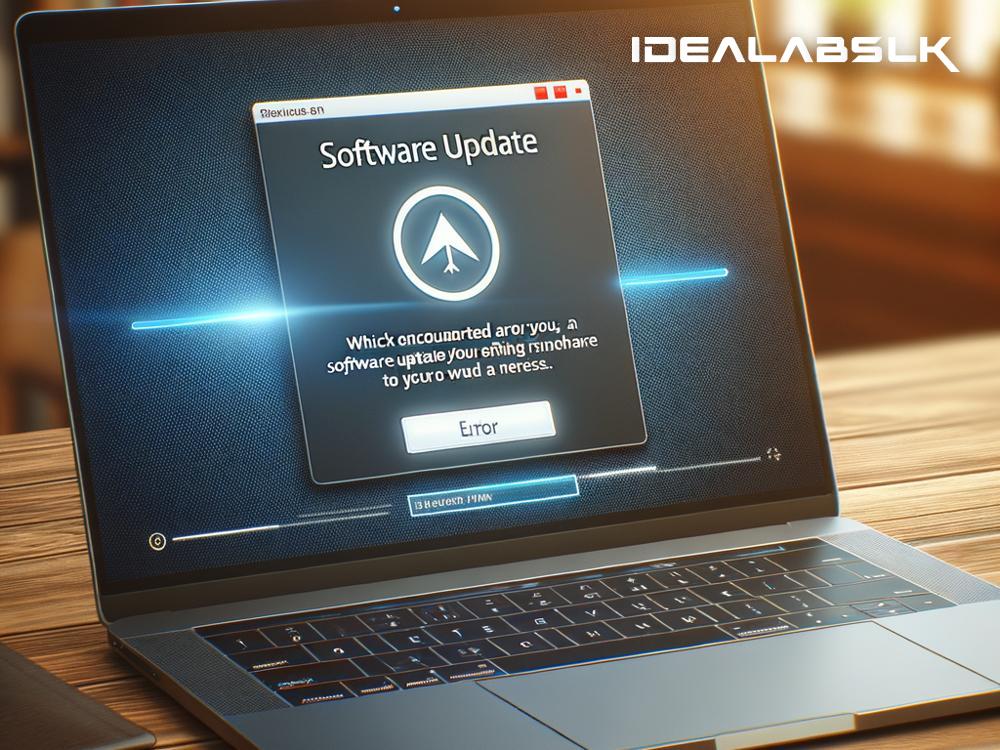Troubleshooting 'Laptop Freezes After Software Update': Simple Steps to Get You Back on Track
We've all been there: you patiently wait for your laptop to install the latest software updates, perhaps eagerly anticipating new features or improved performance. Then, the unthinkable happens - your laptop reboots only to freeze up, leaving you staring at a static screen, wondering where it all went wrong. Frustrating, right? Fear not! In this post, we'll walk you through some straightforward troubleshooting steps to help your laptop recover from its post-update freeze.
Step 1: Give It Some Time
First things first, patience is key. Sometimes, what seems like a freeze is actually the update continuing to install in the background. This can especially be the case with major updates. So, grab a cup of coffee, take a short walk, and give your laptop around 30 minutes to see if it sorts itself out.
Step 2: Force Restart
If patience yields no results, it's time for a more direct approach. A force restart can often shake your laptop out of its frozen state. Here's how:
- For laptops with removable batteries, simply take the battery out, wait a few seconds, then put it back in and power up.
- If your battery is non-removable, hold down the power button for about 10-15 seconds until the laptop turns off, then press it again to turn it back on.
This method can sometimes kickstart your system, but if the frostiness persists, let's move on to more solutions.
Step 3: Boot in Safe Mode
Safe Mode is a stripped-down version of your operating system. It's a handy way to troubleshoot because it disables most third-party software and drivers, which can be the culprits behind the freezing. Here's how to boot into Safe Mode for both Windows and MacOS users:
- Windows: Restart your laptop and press the F8 key repeatedly as it boots up. Select "Safe Mode" from the menu that appears.
- MacOS: Turn on your Mac and immediately press and hold the Shift key. Release the Shift key when you see the login window.
Once you're in Safe Mode, see if your laptop is still freezing. If it's not, there's a good chance a software conflict is to blame. Try uninstalling recently added applications or drivers that might be causing the issue.
Step 4: Run a System Restore or Recovery
If Safe Mode doesn't offer a solution, a system restore can be your next line of defense. This process can roll your laptop's system files and programs back to a previous state when everything was running smoothly.
- Windows: Search for "Recovery" in the start menu, select "Open System Restore," and follow the prompts to choose a restore point.
- MacOS: Boot into MacOS Recovery by restarting your Mac and holding down Command + R. Use Disk Utility to repair your disk, or choose "Restore From Time Machine Backup" if you have a backup available.
It's worth noting that this won't affect your personal files, but it may remove apps and drivers installed after the chosen restore point.
Step 5: Update Your Drivers
Sometimes, a software update can conflict with outdated drivers, causing your system to freeze. Updating your drivers, especially the graphics driver, can often resolve the issue.
- Windows: Go to Device Manager, find the device whose driver you want to update, right-click it, and select "Update driver."
- MacOS: MacOS typically updates drivers through its standard software update process, but checking for updates manually in the App Store can't hurt.
Step 6: Check for Malware
Malware can often cause system instability and freezing. Running a thorough malware scan can help identify and eliminate any malicious software that could be causing problems.
Step 7: Factory Reset
If all else fails, a factory reset can be your last resort. This will erase all data on your laptop, returning it to its original state, so make sure to back up anything important.
- Windows: Go to Settings > Update & Security > Recovery, and select "Get started" under "Reset this PC."
- MacOS: Boot into MacOS Recovery mode, select "Disk Utility," erase your hard drive, and then choose "Reinstall MacOS."
Conclusion
Software updates are supposed to improve your laptop's performance and security, not lead to freezes and frustration. However, if you find yourself facing a frozen screen post-update, the steps above offer a methodical approach to diagnosing and resolving the issue. Remember, when in doubt, professional tech support is always a good call. With a little patience and troubleshooting, you'll have your laptop back to its functional self in no time.

